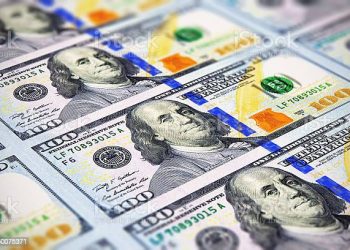As signs of a potential end to the Federal Reserve’s rate-hiking cycle wobbled the dollar, some investors are setting their sights on the battered currencies of commodity-producing countries, including Norway and Australia. Many commodity currencies faced challenges earlier this year when prices for raw materials, such as oil and copper, fell from their 2022 peaks amid concerns that central banks’ efforts to combat inflation would negatively impact global growth and demand for commodity exports.
Despite this, the growth in the U.S. and some other countries has proven to be resilient, leading strategists to believe that a global economic downturn is unlikely. This has driven rallies in risk assets like stocks, but raw materials prices and some commodity currencies have been slower to respond. However, some investors see this as an opportunity to make investments at a bargain.
Expectations that the Fed’s rate increases, which boosted the dollar to a two-decade high last year, are reaching their conclusion add to the allure of commodity currencies. Francesco Pesole, an FX strategist at ING Bank, favors the Norwegian crown and the Australian dollar, seeing significant upside potential from a valuation perspective.
The bullish view on commodity currencies gained momentum recently after Chinese leaders pledged to increase policy support for the economy. This announcement led to rises in prices for oil, copper, and other raw materials, while commodity currencies like the Australian and New Zealand dollars saw modest gains.
The dollar may experience further weakness if the Fed signals that it believes U.S. inflation will continue to cool down, reducing the likelihood of future rate increases. The central bank is expected to announce a 25-basis-point rate increase at the conclusion of its monetary policy meeting, but investors are not anticipating more tightening beyond that.
While some commodity currencies have performed strongly against the dollar this year, many investors are looking for potential winners among the laggards, including the Norwegian crown, New Zealand dollar, and the South African rand.
Analyses show that the Norwegian currency is undervalued against the U.S. dollar by more than 30%, while the Australian dollar is undervalued by about 20%. The Australian dollar could appreciate if global growth exceeds expectations and commodity prices rise.
While commodity currencies are not the only way to bet on further dollar weakness, some analysts caution against relying too heavily on valuations for short-term predictions, as currencies can deviate from their fair value for extended periods.
Nonetheless, some strategists believe that the dollar’s peers have significant room for appreciation. Currencies from countries like Sweden and Norway, which are considered undervalued, could benefit from any signs of economic strength in their respective nations.
While investing in commodity currencies carries its own risks, as the dollar could rebound under certain conditions, investors are closely monitoring the ongoing developments and potential opportunities presented by these currencies.
Overall, the currency landscape remains dynamic, and investors are keeping a close eye on various factors, such as central bank policies, economic growth, and raw material prices, to make informed decisions on currency investments.











